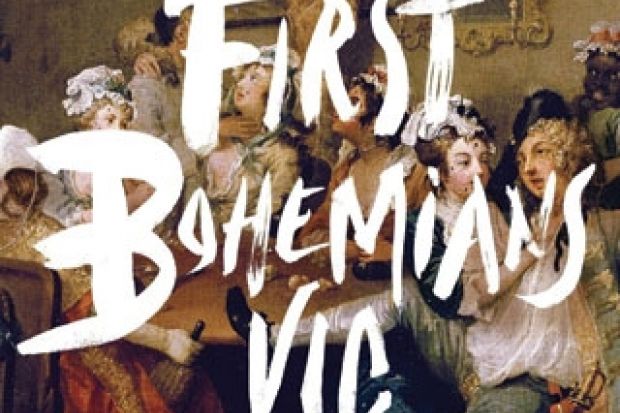London history is currently a hot subject, and Vic Gatrell teams it with art history in a new book that follows on from his last, City of Laughter, hailed as a rumbustious, rowdy and rude read about 18th-century high life, low life and their intersection in the world of graphic prints and caricatures. In this book, Gatrell takes Covent Garden as his frame, and it is at times a dubiously elastic one in the way he makes it the literal centre of London and the symbolic centre of its culture. John Collett for instance, whose humorous mezzotints are given welcome attention, trained and exhibited in Covent Garden in his early career, and then moved away. “Nonetheless,” says Gatrell confidently, “Hogarth and Covent Garden were in his bloodstream.” But the subtitle’s show must go on: life and art, with William Hogarth and Thomas Rowlandson as principals, embrace human appetites, follies and excess. Happily, that chimes with Gatrell’s relish of earthiness; he is an enthusiastic historian of prostitution, bawdiness, crime, drunkenness and riot. You start to wonder if anyone ever had a quiet night in (and you might start to want one).
Gatrell takes two risks. He exports the term bohemians back a century to describe the eccentric and libertine rush of life in Covent Garden; throw in free-thinking, satire, contempt for middle-class mores by men on the razzle and on the make, and all the energy certainly invites the use of the word. Historians, he says, have been too solemn about coffeehouses, taking them as pivots of polite sociability in the enlargement of the public sphere, whereas accounts by Thomas Brown, Ned Ward and others suggest that many doubled as brothels. Second, Gatrell argues that Covent Garden was “nothing less than the space in which the primary expressions of Georgian art and literature were hatched”. He proposes a binary of polite academicians and realists, in both literature and art, as if only realism drove his novelists (all of whom are male, incidentally) and painters and their avowed interest in life and manners. The trouble is that this misreads the complications and subtleties of aesthetics actually used, especially among novelists and satirists. He also wilfully omits any women writers from this picture.
Nonetheless, Gatrell’s evocation of taverns, bagnios and alleys is compelling. He has a lovely eye for shadows in paintings and how they indicate time of day; he has a lively eye for sympathies in sketches. Butchers, bawds, rakes, tradesmen, sailors, fruit-sellers, fruit-buyers, tailors, cooks, pie-men, aristocrats, oilmen, coalmen, stay-makers, bookbinders, button-sellers and dozens of others are particularised fleetingly from crowds. Exact topography makes it clear how jostle and juxtaposition brought all sorts of people together. Decent dealings get an occasional look-in; the possibility of clean, calm and sunny moments is conceded. But probably the best place to read The First Bohemians is in a bubble bath after necking a bottle of claret to get in the mood: Gatrell’s subjects are a filthy lot. The Duke of Norfolk never washed; his servants would hose him down, fully clothed, when he passed out drunk (which fortunately he did often). George Dawe, an academician known as the Grub, would wash only the oval of his face, leaving a black frame of grime that attracted wonder even in his own day. Sir Joshua Reynolds comes over as a villain of sorts – for being passionless, slyly sexual in his sexlessness and for all his clubbability, a bore. The man just didn’t drink enough! Gatrell blames him for a stifling regime at the Royal Academy that Rowlandson, James Gillray and William Blake escaped to take their revenge in satire (for which we should then thank Reynolds, no?). But Gatrell is sympathetic to what he calls the “higher harlotry” who slid inevitably into squalid destitution, and to the large underclass of artists and engravers, 146 of whom get mini-biographies in a very useful appendix. Most died derelict, in debt and drunk. It is sobering reading. Was it really a Golden Age?
A complaint to Penguin: the cover uses schlock-horror typography, slap-on white paint lettering – horrible, and a disservice to the book, which for all its zest for sensual assault engages with the unwashed great in illuminating scholarship.
The First Bohemians: Life and Art in London’s Golden Age
By Vic Gatrell
Allen Lane, 512pp, £25.00
ISBN 9781846146770
Published 3 October 2013
Register to continue
Why register?
- Registration is free and only takes a moment
- Once registered, you can read 3 articles a month
- Sign up for our newsletter
Subscribe
Or subscribe for unlimited access to:
- Unlimited access to news, views, insights & reviews
- Digital editions
- Digital access to THE’s university and college rankings analysis
Already registered or a current subscriber? Login





